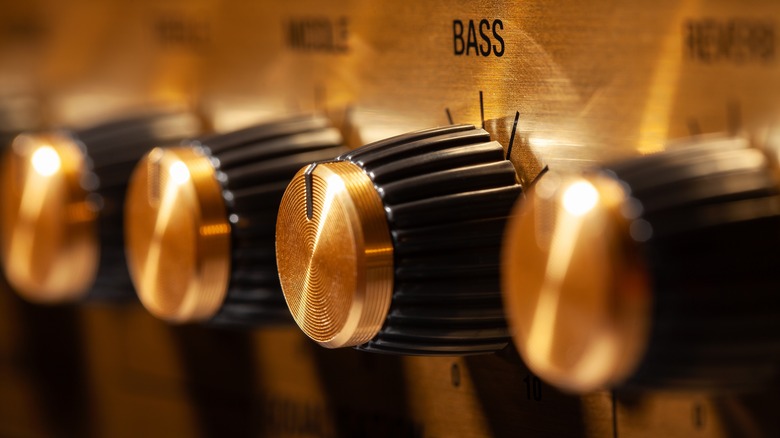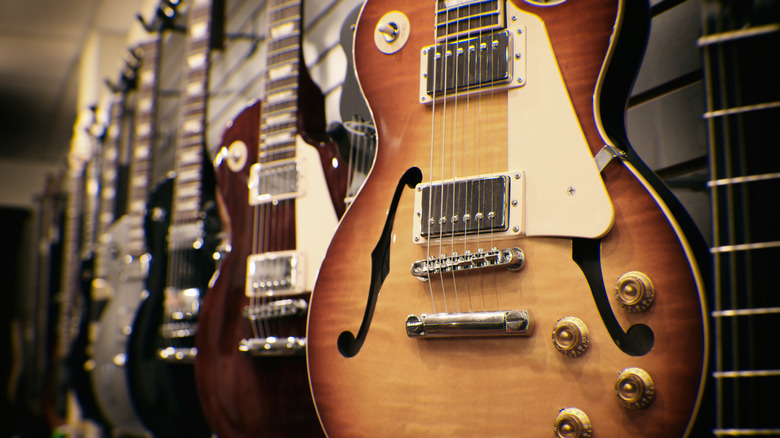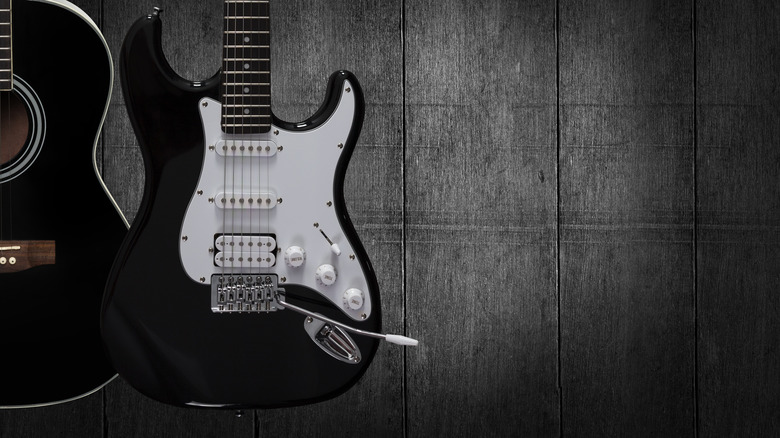Electric Guitars Explained: How Do They Work?
Whether you're a fan of hard rock, punk, or blues, the electric guitar has become a staple instrument in pop and rock culture. Making its way into the music industry in the 1930s, the electric guitar has transformed an instrument that once was only played to small groups into one that's now played in front of thousands of people. But how do electric guitars work, and what is responsible for their distinctive sound?
The technology behind electric guitars dates back to 100 years ago when engineer Lloyd Loar developed a device that could amplify the sounds of a viola and double bass. Loar worked at Gibson Guitar Company, now one of the world's best major electric guitar brands, and his invention inspired many other companies to experiment before the first electric guitar (known as the "Frying Pan") was sold in 1932.
After improvements to prevent feedback from the earliest electric guitars, Leo Fender manufactured and distributed the world-famous Fender Telecaster in the early 1950s, which is now a name all musicians can't forget. Let's take a deeper look at the inner workings of the electric guitar and what the different types are.
What are the mechanics of an electric guitar?
If you've ever owned an electric guitar, you'll know that plucking strings without being connected to an amplifier will barely produce a sound. This is because they don't share the same hollow body architecture acoustic guitars have that allows the sound to resonate. Instead, electric guitars rely on electromagnetism to convert vibrations from the strings into electrical signals that can be picked up by an amplifier.
Mostly responsible for an electric guitar's electromagnetism is a device called a magnetic pickup. This device is located directly beneath the strings of the guitar's body so it can easily pick up vibrations from each string. The pickup consists of six separate magnets (one for each string) or in some cases, one long bar magnet. In both cases, the magnets are wound with ultra-thin conductive wire to generate electricity.
Of course, if you're using an electric guitar, you're going to need an amplifier for it to work. The amp's role is to take the electric signals picked up by the pickup's coil and pass them through a speaker. However, as the signal of an electric guitar isn't powerful enough to drive the speaker, a pre-amp is built into most guitar amps to boost the signal.
What are the different types of electric guitars?
Depending on what type of sound you're looking for, there are three main types of electric guitars to pick from. First are solid-body electric guitars. These electric guitar types feature some of the most well-known names in the electric guitar world, such as the Fender Telecaster and Stratocaster. Made of solid wood, the electric guitars produce no resonance and are less prone to feedback, making them ideal for heavy genres of music.
The next type is semi-hollow electric guitars. These bring a little more acoustic qualities to the table but can still be found in some genres of rock. Semi-hollow electric guitars typically feature two F-shaped holes and a central wooden block down the middle of the body. As they aren't completely hollow like hollow-body electric guitars, semi-hollow electric guitars share some qualities with solid-body models, such as feedback resistance. This makes them ideal for fusion music genres, such as blues-rock.
Last on the list is the hollow-body electric guitar. These may look the same visually as semi-hollow guitars, but they lack the central wooden block on the guitar's body. This means they're completely hollow inside, generating a warmer acoustic that's more appropriate for jazz and blues. The hollow-body and semi-hollow electric guitar types sound louder than a solid-body guitar when strummed without an amp. However, they're still not loud enough for most performance settings.
Should you buy an electric or acoustic guitar?
There are some practicalities to consider if you've never played an acoustic or electric guitar before.
If you're looking for a hobby you can easily pick up throughout the day, an acoustic guitar's minimal setup is ideal for practicing in short bursts. You don't need an amp and cable, and there's no need to mess around with the volume and other knobs. Electric guitars, on the other hand, require knowledge of pedals and effects, and you'll need to find the sweet spot on your electric guitar amplifier.
Another aspect to consider if you're a new guitar player is how easy and playable the different types are. As electric guitars typically feature a thinner neck, one may find them more ergonomic, though their larger weight may not be ideal for younger players. String gauges are another important consideration. As the strings on an acoustic guitar are thicker than an electric one, they are slightly harder to bend. This means you're more likely to encounter pain in your fingertips when first playing, but this will fade over time. It's important to remember not to push yourself if you feel pain to avoid potential injury.
What's the difference between electric and electro-acoustic guitars?
If you can't make your mind up over whether to buy an electric or acoustic guitar, you can buy an electro-acoustic guitar to get the best of both worlds. This type of guitar allows you to play both unamplified and amplified, allowing you to enjoy the warm sound of acoustic guitars while getting to play with amp controls and pedals as you would with an electric guitar.
The key difference between an electro-acoustic and an electric guitar is that while an electric guitar is barely audible without an amp, the sound of an electro-acoustic guitar is reminiscent of an acoustic guitar when it's not plugged in.
One misconception of electro-acoustic guitars is that when plugged into an amp, they will sound like an electric guitar. This is not the case, however, as nearly all electro-acoustic guitars utilize piezo pickups over magnetic ones. These devices amplify the acoustic qualities of the guitar to create a more natural tone. They're a relatively new technology, as piezo technology only came into the industry in the 1970s. But, if you like the sound quality of acoustic guitars and want to experiment with effects like reverb, delay, and chorus used by electric guitars, an electro-acoustic guitar is a great versatile choice.




